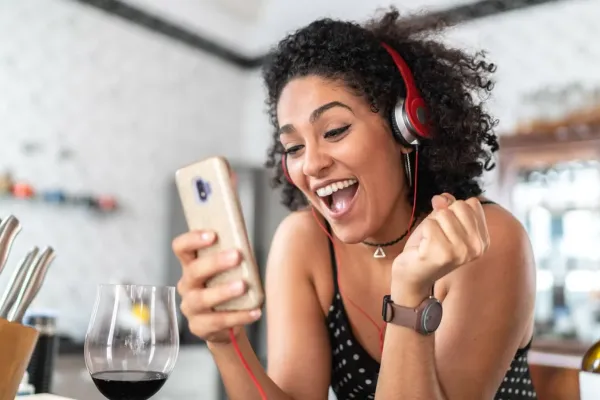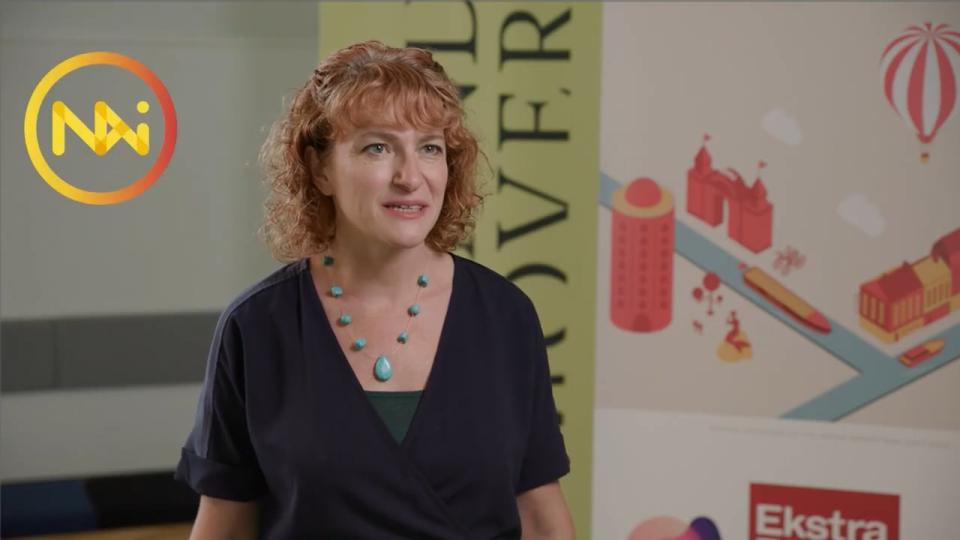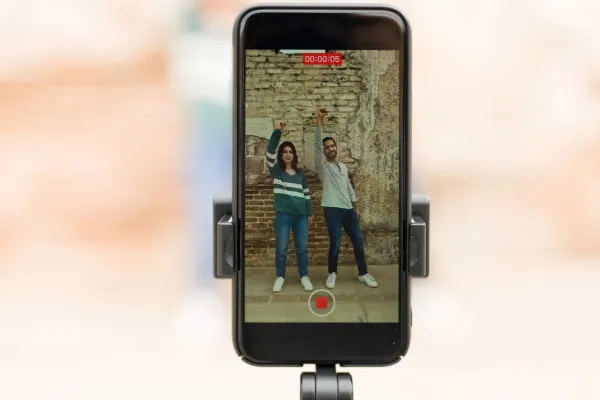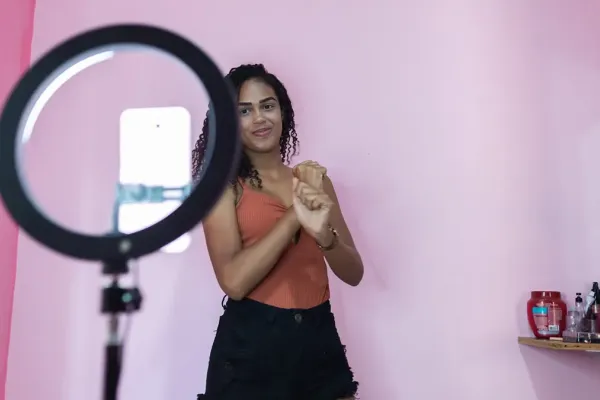
 Details
Details
Anyone who’s spent any time on TikTok will know just how integral music is to the platform. Sound isn’t just an afterthought on TikTok; it’s fundamental to the platform and helps drive engagement rates.
In this article, we take a deep dive into the importance of sound on Tiktok, examine the ways in which brands can use TikTok’s ‘trending sounds’ and explore how brands can leverage sound to boost their native advertising efforts.
What is a TikTok trending sound?
But let's start by asking: what is a TikTok sound?
A TikTok trending sound can be anything from an iconic line of TV dialogue to a song lyric from a popular artist to an unearthed gem from pop culture history. The sound from an uploaded video can be used by others who want to create their own videos with the same sound, either in a unique way or by playing off the original video’s format.
When a sound is used over and over again in this way, it becomes a ‘trending sound’ – essentially, a sound that’s gone viral on the app. In fact, most videos are riffs on the same phrase or sound but just interpreted in new ways.
READ MORE: 'Don’t Make Ads. Make TikToks':
How to do native advertising on the mega-popular platform
Pump up the volume! The importance of sound on TikTok
Without a doubt, sound is a driving force in the broader TikTok experience, providing a more immersive experience for users who are looking for more than just image sharing.
TikTok’s ‘sound-on’ approach is what differentiates it from other social platforms and is also a very important element of its success. Unlike other video platforms, which have traditionally emphasised creating for ‘sound-off’ environments in order to maximise viewing opportunities, sound is crucial to the user experience on TikTok.
The way users interact with a TikTok’s sound is a key element in how the platform’s algorithm identifies trending content and determines which videos to show users on their For You pages (FYP). As such, native advertisers need to consider audio as equally significant as visuals in their clips.
According to a survey looking at the impact of sound on digital advertising:
- Sound is better received on TikTok: Users experience sound on TikTok as “fun”—a 66 percent increase compared to other platforms with the audio turned off. Brands can use audio on TikTok to evoke feelings and move people in a way that isn't possible on other platforms.
- Sound stops the scroll on TikTok: In a world of endless content, sound is a captivating force that stops users from scrolling, draws them in and invites them to connect – whether the content is organic or paid. In fact, 73 percent of the study’s respondents said they would be more likely to stop and look at ads on TikTok that use audio, with popular music being a key attention-grabber.
- Sound is integral to TikTok: 88 percent of TikTok users said sound is essential to the TikTok experience. If a TikTok is separated from its sound, the video no longer makes sense. For brands to resonate on the platform, they need to build holistically with audio as a primary creative driver.
- Sound inspires creativity on TikTok: TikTok’s unique ‘remix culture’ flips engagement on its head. Users like to stumble upon new sounds shared by other users (including brands) and make them their own. This creative collaboration is at the very core of TikTok and sound is what brings relationships together on the app.
Recognizing the key role that music plays on its platform, TikTok shared a listing of the top tracks and artists on the platform throughout 2021, including regional insights, genre trends, most popular artists by category and more.
READ MORE: Best practices for creating native ads on TikTok
How to leverage sounds on TikTok for advertising
Utilising TikTok’s Discover page is a way for users to see which sounds are trending on the platform. For businesses, TikTok has added a new element to the Trends section of its Creative Centre, which provides a listing of the most popular songs in the app, at any given time, which is filterable by region.
Can brands jump on ‘trending sounds’ on TikTok?
So, how do brands take advantage of ‘trending sounds’ on TikTok? Well, it’s complicated.
Brands can certainly engage with TikToks that use ‘trending sounds’. Being one of the first to react to a ‘trending sound’ can give a brand a huge advantage in and of witself. Being nimble and having a little creativity can go a long way toward making a trending sound successful from a brand standpoint.
But in their own TikToks, brands can’t use ‘trending sounds’.
That’s because TikTok has enacted strict limits on the music and soundtracks that brands can access when producing content on the platform. Brands can no longer use TikTok’s ‘trending sounds’ and music for sponsored content or posts for their company profiles without obtaining a commercial use licence.
In the absence of obtaining commercial-use authorisation, brands are limited to TikTok’s own Commercial Music Library when creating videos.
What’s TikTok’s Commercial Music Library?
The TikTok Commercial Music Library is a collection of more than 150,000 pre-cleared, royalty-free tracks sourced from artists and music houses. The library features tracks both with and without lyrics in every imaginable genre and it continues to grow.
The library is currently available globally for any account that uses TikTok for marketing, advertising, sponsorships, endorsements or publicity, including official brand accounts and their promotional partners, NGOs and government organisations.
Related: Native Advertising - The Advantages and Disadvantages
How do brands use Commercial Music Library tracks?
Commercial Music Library tracks are available in the TikTok Sounds library for all users and most are licensed for worldwide unlimited use – but only within the TikTok ecosystem. That means that both users and brands can share their TikToks that use Commercial Library sounds to any platform. But brands can’t use the tracks to create content on other platforms; nor are they allowed to remix or modify the track in any way.
Brands are free to use songs from the Commercial Music Library in their regular TikTok videos and ads launched through the Ads Manager, TikTok’s ad management tool.
For promotional campaigns such as TopView Ads and Hashtag Challenges, however, brands need to fill out an application so that TikTok can keep a record of how and where music is being used on the platform.
See here for the application process.
Other ways to implement sound on TikTok
While it’s essential for brands to consider sound, ‘trending sounds’ are not the only way to drive engagement.
Brands can, of course, create their own sounds just for TikTok. But they need to be copyright-free, otherwise TikTok will remove it.
They can also generate ‘sonic identities’ by translating their identities into audio – think the classic sound of a Mac starting up or the iconic “Maybe it’s Maybelline” tagline spoken in commercials.
Sonic identities can be formed simply through the use of:
- Talking Heads: Explainer videos, how-tos, or engaging storytelling.
- Voice-Overs: Showing off the product or experience while an explanation occurs in the background.
- Sound or Custom Sound: Where no talking is necessary but the brand creates its own personalised trending sound.
Related: The Best Visual Techniques for Visual Ads
Grabbing attention with tunes
A great example of a brand making the most of TikTok’s sound-on mentality is Volkswagen. To introduce its new, silent electric ID.4 SUV, Volkswagen needed to make a whole lot of noise with a brand awareness campaign using the platform’s TopView ad format.
Volkswagen worked with a notable TikTok creator and pop-duo to produce a fresh new soundtrack using its electric vehicle.
The campaign delivered immediate results and a lasting impression, with over 56 million views. The sound-driven ad was such a hit that Volkswagen took the ad to TV and broadcast the catchy soundtrack during the NBA playoffs.
That's it – for now...
And there you have it: how to best use sound when doing native advertising on TikTok. This marks the last of our introductory series on using TikTok as a platform for native advertising.
Be sure to read the other posts in the series:
- “Don’t Make Ads. Make TikToks”: How native advertisers can take advantage of social’s new mega-popular platform
- Beyond teen entertainment: How TikTok is generating creative examples of native advertising
- Best practices for creating native ads on TikTok
Given the shifting nature of this fast-paced platform, we’re confident this won’t be our final word on TikTok!



